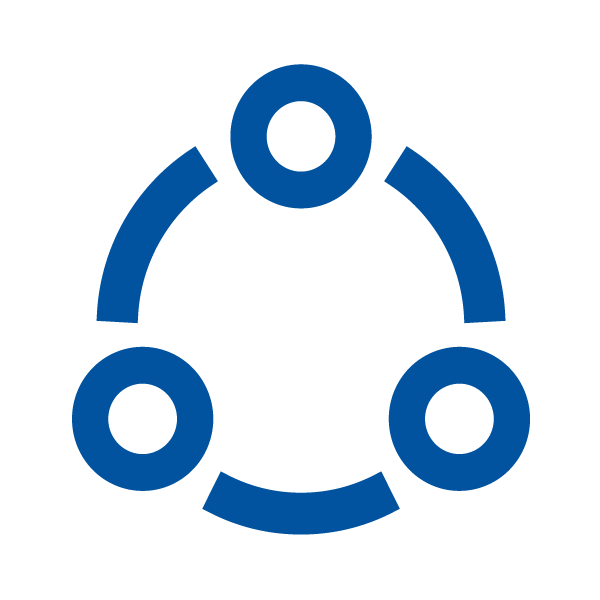Workshops & Hands-On Labs
IDUG NA 2025 Db2 Tech Conference | Atlanta, Georgia
Click Here to Register for Workshops & Hands-On Labs
Click here to Return to IDUG NA 2025
Sunday, June 8
Full-Day Sessions | 9:00 am - 5:00 pm
Presenter: Mark Daubman, Broadcom
New to getting Open Mainframe Project Zowe up and running? Bring your laptop and join us for an informative workshop designed to guide you through the essential steps of installing and configuring Zowe's API ML, the open-source framework that facilitates mainframe services accessibility for both application developers and database administrators. This workshop will be divided into two main segments.
In the first part, we’ll dive into the critical Zowe configuration aspects, covering three key focus areas:
1. YAML Edits - Learn how to customize configurations efficiently to suit your environment.
2. Certificates Configuration - Understand the importance of security and how to set up certificates for seamless connectivity.
3. Networking - Explore networking configurations that ensure Zowe communicates effectively across applications and your mainframe.
In the second part, we will shift our focus to how Zowe enhances the Db2 development and administration experience for users of Broadcom’s Db2 Suites. Discover how Zowe integration streamlines workflows and improves productivity. Whether you're a seasoned mainframe developer or new to the ecosystem, this workshop will equip you with the knowledge to leverage Zowe and transform how you interact with Db2 for z/OS.
Morning Sessions | 9:00 am - 12:30 pm
Presenter: Martin Dinh, IBM
Modern hybrid cloud infrastructures are becoming too complex for humans to manage efficiently and effectively. Shortage of experienced Db2 for z/OS professionals is further exacerbating the situation. This warrants a need for embracing AI and automation to augment human intervention to ensure the highest achievable availability and performance for Db2® for z/OS® systems. IBM Db2® AI for z/OS® ("Db2ZAI") provides three key features.
1. SQL Optimization - This empowers the optimizer in your Db2 for z/OS engine to determine the best-performing query access paths with performance validation based on your workload characteristics
2. System Assessment - This detects Db2 system performance exceptions and provides recommended actions for tuning which are based on your environment.
3. Distributed Connection Control (DCC) - This provides protection for Db2 for z/OS from unintentional disruptions and intrusions that can originate from remote applications
This Hands-on Lab covers these main features provided by Db2ZAI.
This half-day hands-on workshop is designed to provide you with all the details you need to know for a successful SSL/TLS deployment for Db2 LUW and on-going certificate maintenance.
Encrypting network communications is essential in today’s security conscious world and is a complex task with many moving parts. That complexity is confirmed by the number of cases Db2 support and development see asking for help configuring TLS. This workshop builds on those years of experience to give you the knowledge you need to set things up correctly and securely. The workshop will start with the very basics of asymmetric cryptography, which form the foundation of certificates and turn the discussion to trust and the role it plays. From there, we will turn to hands on exercises configuring the Db2 server, followed by Db2 clients/drivers allowing encrypted client/server communication. Topics such as certificate creation, keystore management, and hostname validation will be discussed and practiced. The steps required for certificate renewal will be demonstrated. Advanced topics such as TLS with HADR will be discussed, showing how the practiced knowledge of setting up client/server TLS will follow through to HADR.
While not necessary to attend the workshop and learn something, the hands on-portions will require you to bring your own laptop and be able to establish an SSH connection to the public IBM Cloud.
This workshop will give you hands-on experience for managing a Db2 HADR with Pacemaker Cluster on the AWS, Microsoft Azure, Google Cloud or IBM Cloud. The session will cover the Cloud specific Implementation of Fencing and virtual IP Addresses. It will help you understand the information provided by the cluster utilities, across basic operations, diagnostics, and best practices from the IBM Labs This workshop will also demonstrate basic problem scenarios, troubleshooting and collection of essential support data to accelerate problem resolution in emergency cases.
Are your DB2 queries slowing down your applications? Are you struggling to meet performance SLAs? It's time to take control of your database performance with expert query tuning techniques.
This session will delve into the essential principles and best practices for optimizing DB2 queries. You'll learn how to:
- Identify Performance Bottlenecks: Discover powerful tools and techniques to pinpoint the root causes of query slowdowns.
- Leverage Explain Plans: Understand the execution plan of your queries to identify inefficiencies and opportunities for optimization.
- Optimize Query Structure: Learn how to rewrite queries to improve their performance, including techniques like indexing, partitioning, and query hints.
- Utilize DB2 Performance Tools: Explore the suite of DB2 performance monitoring and tuning tools to gain valuable insights into your database behavior.
- Implement Effective Monitoring Strategies: Establish a robust monitoring framework to proactively identify and address performance issues.
By attending this session, you'll gain the skills and knowledge to significantly improve the performance of your DB2 queries, leading to faster response times, reduced system load, and enhanced overall database efficiency.
Afternoon Sessions | 1:30 - 5:00 pm
As the Data Lakehouse model revolutionizes data stores, it has become crucial to integrate vital IBM Z data within them. Experience how easy it can be to synchronize your vital IBM Db2 z/OS and VSAM data directly into Iceberg tables in Cloud Object Storage. With Data Gate for watsonx, get the power of the Open Lakehouse leveraging the most important data in your enterprise!
Make sure to bring your own device to complete the lab exercises, and pre-create an IBM ID.
A cloud native resource without monitoring (or with a very complex monitoring setup) is like driving a car without a dashboard - you wouldn't know if you are speeding or low on fuel! Db2 needs a concise and simplified monitoring solution that gives a bird eye's view on the performance metrics and Db2 diagnostics. We present here a solution that is available in AWS, Azure, Google Cloud and IBM Cloud while running Db2 with a Infrastructure as a Service model.
The speaker will cover her experience of collaboration with all cloud vendors, Db2 development and customers like SAP. The session will share the findings from that research and development project and it is based on the cloud native monitoring solutions currently available. The solution consists of a smart combination of Db2 monitoring capabilities, Operating System scheduling and Cloud logging functionality resulting in an out-of-the-box Db2 monitoring solution.
The solution has the following features:
- Displays the most important metrics (based on customer data) of a database instance namely, Bufferpool quality, Activities per second, Activity wait time and Logging performance.
- Information regarding Db2 Diagnostics by providing the count of increasing errors that can be easily extended for a comprehensive diagnostic analysis.
- Whether or not the database is alive.
This solution introduces the Monitoring as a Service infrastructure and enables you to build your own cloud native monitoring solution with a few fingertips.
Have you ever tried to use an LLM? How exactly can they be used in a business environment? And how can Db2 help with the accuracy of what an LLM produces?
This lab will take you through the various components that are used to create a system that generates a RAG (Retrieval-Augmented Generation) for an LLM to use to answer a question. You will get a chance to experiment with a system that provides a environment where you can try out different prompts and settings to see how an LLM will respond to your question.
You will also get to see how Db2 fits into this picture and what vector calculations (and Vector databases) do when generating a RAG prompt.
IBM Db2 Query Monitor for z/OS, V3.4 offers current and historical views of query activity throughout Db2 subsystems. It gives you the ability to efficiently customize and tune your SQL workload and Db2 objects to validate the effectiveness of your Db2 subsystems and improve overall performance. It also offers you extensive choices so you can determine what monitoring information you will gather, and when.
DB2 Query Monitor for z/OS enables you to identify problem SQL activity and applications, allowing you to focus your efforts on improvement. DB2 Query Monitor enables you to do the following:
- Proactively manage DB2 resources
- React quickly and effectively to supply and demand-related DB2 problems (such as those resulting from inefficient SQL or inadequate object structures)
- Identify SQL requests that prevent critical requests from completing on schedule
Db2 Query Monitor comes with two interfaces, ISPF and a Web Client. This hands on lab will take the user through the Web Client interface. From your web browser, you can review query activity in Db2 Query Monitor, the SQL/CA, Db2 Commands, view alerts, and configure actions and responses.
This workshop will give you the education and information you need to use existing and new features of Amazon RDS for Db2. Some of the topics covered during this workshop will include provisioning, scaling, backup, monitoring, migration and beyond. Each module will be introduced and presented and then participants will be provided an environment they can use and go through a series of instructor led exercises to practice what they have learned and explore. This will be a joint workshop between the IBM and AWS RDS teams.
Thursday, June 12
Afternoon Sessions | 1:00 pm - 4:30 pm
This hands-on lab introduces participants to a new AI-powered console designed to simplify and enhance Db2 database management. Through guided exercises, participants will learn how to use the console's features to monitor database performance, troubleshoot common issues, and apply optimization recommendations.
Key tasks will include setting up and customizing dashboards, diagnosing performance bottlenecks using real-time monitoring tools, and leveraging AI-driven recommendations for query tuning and resource management. Participants will also explore natural language interactions for querying data and step-by-step troubleshooting.
This lab is designed for database administrators and IT professionals who want practical experience using an intelligent, streamlined tool for managing Db2 environments. By the end of the session, attendees will have a better understanding of how to integrate these capabilities into their day-to-day workflows to improve efficiency and system reliability.
See how IBM SQL Data Insights combines unsupervised deep learning with traditional SQL queries to allow you to run similarity, dis-similarity, cluster, analogy, and commonality queries on your Db2 z/OS data. You can easily uncover the hidden relationships across tables and views in your Db2 data, quickly gain actionable insights for solving your business problems as they arise, and confidently arrive at better business decisions. We will explore tables containing mutual funds financial data, home insurance underwriting data, and food nutrition data. You will experience how AI SQL queries can be applied to industry specific domains to find similarities, segment customers, and find outliers among relational data.
Make sure to bring your own device, and pre-create an IBM ID!
Bring your own device to this workshop, where you will have a chance to perform a hands-on lab to experience the latest deliverables towards Db2 user transformation.
- Db2 administrator personas can execute some of their daily tasks in a more intuitive way via Db2 Administration Foundation and its integration with Db2 Tuning Services, Query Workload Tuner and IDAA Administration services. Last but not least, administrators can also benefit from Db2 DevOps experience (DBaaS) to “shift-left” database operations to application developers under their rules and administrative directives.
- Db2 application developer personas can develop / test and deploy application changes that also require database change in a speed that business demand. Using Db2 Developer Extension in IDE will simplify coding of SQL including native stored procedure code. Using Db2 DevOps Experience services (DBaaS), developers can, on demand, self-service database operations under the rules previously established by the Db2 administrators.
Are you struggling with Db2 subsystem and application performance? Join this comprehensive workshop to enhance your skills in Db2 performance management, covering everything from foundational concepts to advanced techniques. We will examine the critical Db2 components that influence subsystem and application throughput, and learn how to identify, monitor, and optimize key health indicators. Additionally, we will share best practices for effective performance analysis and demonstrate how modern open tools can simplify these processes. You'll leave with practical knowledge to improve Db2 performance and streamline your tuning efforts.
The Db2 community constantly welcomes new database administrators or application developers that access Db2. One of the reasons - Db2 is known as a robust and reliable database management system and a perfect match for private and public cloud environments.
However, sometimes you might face database related issues. The session will cover the first steps in the process of problem determination and problem source identification (PD/PSI). The session gives hands-on examples and practical examples for the strategy and process to encircle and find the problem by asking the right questions and will share best practices for the first occurrence data capture (FODC) tools available for the DBA.





